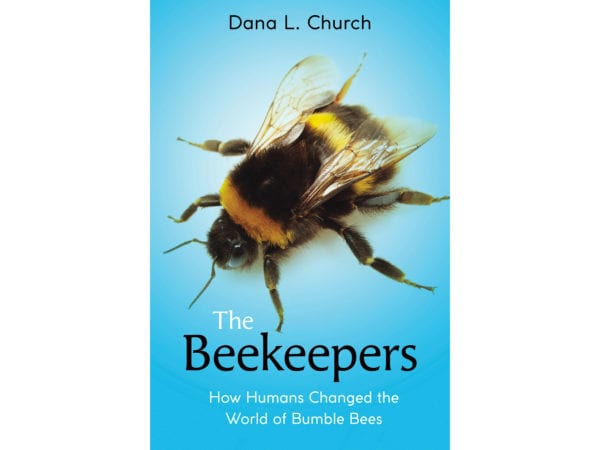
There are many conflicting theories out there on how to nurture future generations of conservationists. The belief in exposing kids to animals in captivity at zoos and marine parks is now widely disputed by animal-welfare advocates. And what about the creatures who are rarely anthropomorphized into cuddly stuffed animals or cartoon characters?
Well-written and accessible non-fiction such as Dana L. Church’s debut, The Beekeepers, might be one of the best tools to motivate young readers and budding naturalists into examining human impact on the environment. Aimed at a middle-grade audience – an ideal age when kids become more aware of life outside of their immediate circle – The Beekeepers examines the reciprocal relationship between species.
Church, who has a Ph.D. in animal cognition, is a self-described “bee nerd.” She is clearly enthused by her subject and isn’t afraid of using exclamation marks to show it. The introduction features a story and Traditional Knowledge from Dr. Henry Lickers, an Elder of the Seneca Nation, Turtle Clan, Haudenosaunee, to establish that, when treated with respect, bumblebees and humans are true allies.
The first chapter begins with a history of the bumblebee’s origins in the Oligocene era (23–34 million years ago), examining how bees came to inhabit different regions. The book then shifts focus to cover physiology and behaviour patterns. It’s a smart way to keep the reader from getting lost in a straight-up history lesson.
There is a lot of background research holding up The Beekeepers – the bibliography reads like a scientific journal – but it doesn’t come across as overly didactic. Plenty of maps, graphs, and photos will hold the reader’s interest, as do fun facts about these “superstar pollinators.” Church also includes analysis and quotes from different scientists, which could start conversations about myth versus science and the vital role these professionals play in conservation and other areas of global urgency.
One might expect that a book about bumblebees would explain the species’ dire situation upfront, but Church doesn’t introduce this material until after establishing the bees’ importance to various ecosystems and food-supply chains. The second half of the book is dominated by discussions of pesticides, unnatural species migration, and other threats, and what is being done to mitigate their impact in various parts of the world.
In the face of the global climate crisis, there is a risk a book like The Beekeepers will scare wannabe melittologists into thinking there is no hope or point in campaigning to save the bumblebee. But Church leaves readers with a sense of hope that scientific intervention and a little effort from everyone, big and small, can reverse the insects’ precarious trajectory.
 Contact us via email
Contact us via email

